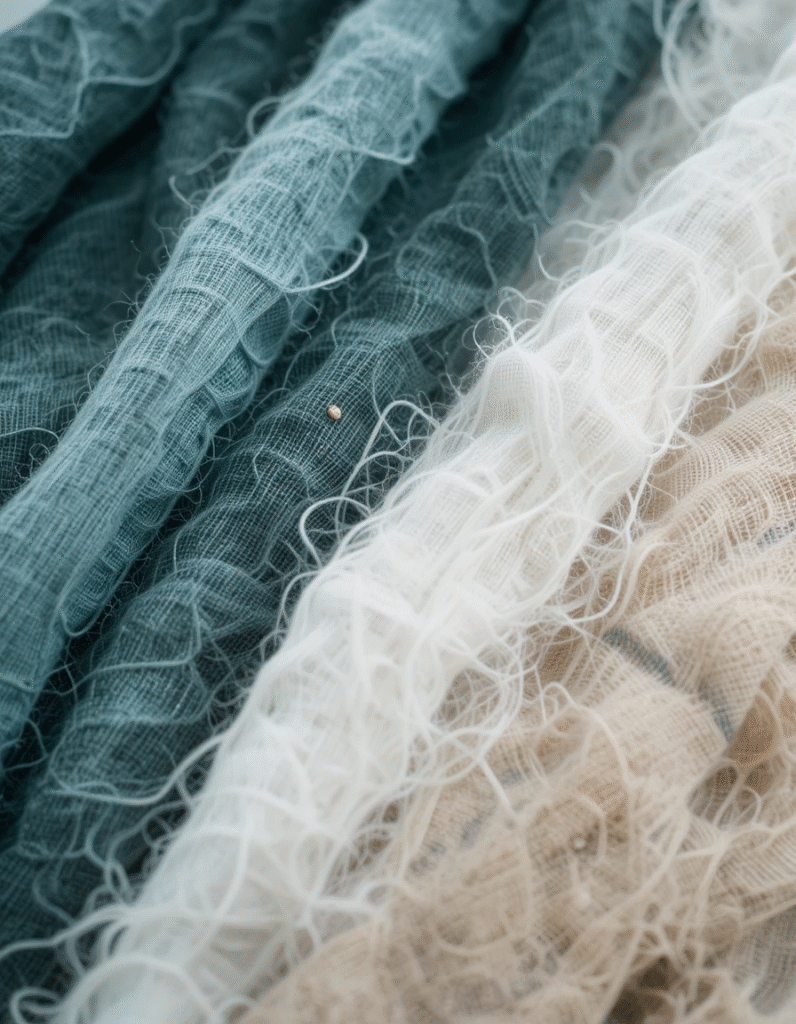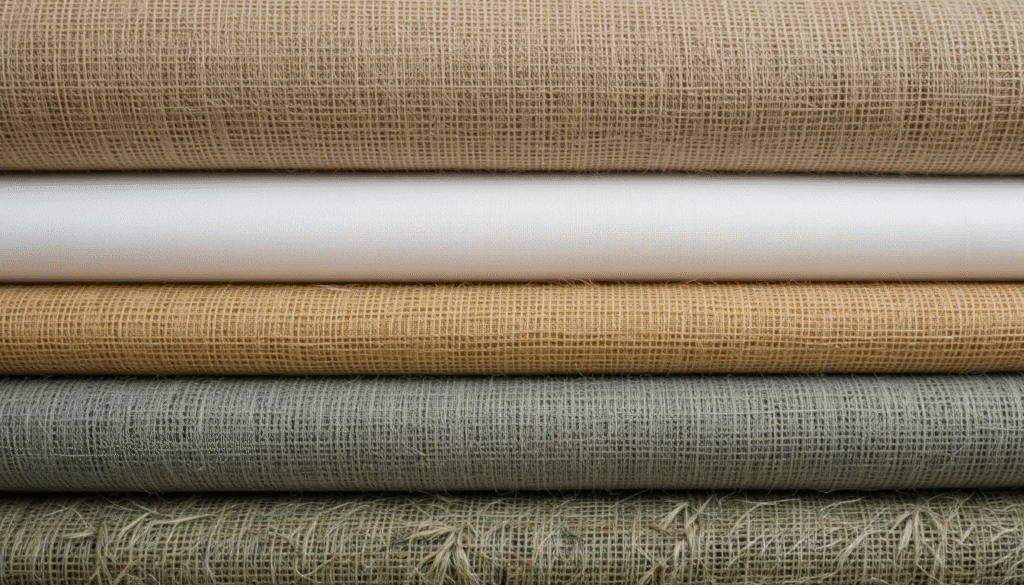Organic cotton, hemp, and recycled fabrics are key materials driving the sustainable fashion movement. Unlike conventional cotton, organic cotton is grown without harmful pesticides or synthetic fertilizers, reducing environmental pollution and promoting healthier soil. Hemp is another eco-friendly textile—it grows quickly, requires little water, and doesn’t need chemical treatments, making it one of the most sustainable natural fibers available. Meanwhile, recycled fabrics, such as those made from used garments or plastic bottles, help reduce textile waste and lower the demand for virgin resources. Together, these materials support ethical production practices and offer consumers more environmentally responsible fashion choices.

Sustainable Fashion: The Role of Organic Cotton, Hemp, and Recycled Fabrics
The fashion industry, once synonymous with glamour and innovation, has increasingly come under scrutiny for its environmental and ethical impact. As awareness grows around the consequences of fast fashion—including pollution, resource depletion, and labor exploitation—consumers and brands alike are turning toward more sustainable alternatives. Central to this shift is the use of eco-friendly materials such as organic cotton, hemp, and recycled fabrics. These materials are not only better for the environment but also encourage more responsible consumption and production patterns.
1. The Environmental Toll of Conventional Textiles
Before delving into sustainable alternatives, it’s important to understand why traditional materials pose a problem. Conventional cotton, for instance, is one of the most resource-intensive crops in the world. It requires massive amounts of water—about 20,000 liters to produce just one kilogram of cotton, equivalent to a single T-shirt and pair of jeans. Additionally, it is heavily reliant on pesticides and synthetic fertilizers, which pollute water supplies and degrade soil quality.
Synthetic fabrics like polyester and nylon, on the other hand, are derived from fossil fuels and are non-biodegradable. These materials contribute to microplastic pollution, with each wash releasing tiny plastic fibers into water systems, harming marine life and entering the human food chain.
Given these issues, sustainable materials like organic cotton, hemp, and recycled fabrics are gaining attention as environmentally sound alternatives.
2. Organic Cotton: A Cleaner Alternative
Organic cotton is grown without the use of synthetic pesticides, herbicides, or genetically modified organisms (GMOs). Instead, organic farming practices emphasize soil health, water conservation, and biodiversity. By eliminating harmful chemicals, organic cotton not only protects the environment but also benefits the health of farmers and workers.
In terms of water use, organic cotton tends to require less irrigation compared to conventional cotton, especially when grown in rain-fed regions. According to the Textile Exchange, organic cotton uses about 91% less water and 62% less energy than conventional cotton. Moreover, organic farming practices promote crop rotation and composting, which enhance soil fertility and reduce erosion.
While organic cotton is generally more expensive due to its labor-intensive farming methods and certification requirements, many brands and consumers view this added cost as an investment in sustainability and ethical labor practices.
3. Hemp: The Super Fiber
Hemp is often hailed as one of the most sustainable natural fibers on the planet. It grows extremely quickly—up to 12 feet in just a few months—and requires very little water compared to cotton. Additionally, hemp is naturally resistant to pests, meaning it can be cultivated without chemical pesticides or herbicides.
One of the standout features of hemp is its ability to regenerate soil. Its deep roots prevent erosion, and it returns nutrients to the earth, making it a valuable rotation crop. Hemp also absorbs more carbon dioxide per acre than most other plants, helping to mitigate climate change.
In terms of durability, hemp fabric is strong, breathable, and long-lasting. It softens with each wash and has natural antibacterial properties, making it an excellent choice for clothing, especially in activewear and casual apparel. Though historically associated with rough, scratchy textiles, modern processing techniques have made hemp fabrics much softer and more comfortable to wear.
Despite these advantages, hemp faces some challenges in widespread adoption. Legal restrictions in some countries and a lack of processing infrastructure have limited its availability. However, as regulations ease and consumer interest grows, hemp is poised to become a major player in sustainable fashion.
4. Recycled Fabrics: Closing the Loop
Recycled fabrics are a cornerstone of circular fashion—a model that aims to minimize waste by reusing and repurposing existing materials. These fabrics can be derived from a variety of sources, including post-consumer waste like old clothes, and post-industrial waste such as textile scraps from manufacturing. One of the most common recycled materials is recycled polyester (rPET), typically made from used plastic bottles.
By converting waste into usable textiles, recycled fabrics help reduce landfill overflow and lessen the demand for virgin raw materials. For example, producing recycled polyester uses 59% less energy compared to its virgin counterpart and diverts plastic waste from oceans and landfills.
Textile recycling also extends to natural fibers. Some companies are developing closed-loop systems where cotton garments are mechanically or chemically recycled into new yarns, reducing reliance on fresh cotton crops.
However, recycling textiles is not without its challenges. The process can be energy-intensive, and the quality of recycled fibers is sometimes lower than that of new ones. Additionally, blended fabrics—such as cotton-polyester mixes—are difficult to recycle efficiently. Despite these hurdles, technological advances are making textile recycling more viable and efficient each year.
5. Consumer Awareness and Industry Trends
The success of sustainable materials depends not only on innovation but also on consumer awareness and industry commitment. Fortunately, both are on the rise. More consumers are seeking out brands that prioritize eco-friendly practices and transparent supply chains. Certifications such as GOTS (Global Organic Textile Standard), OEKO-TEX, and Fair Trade help shoppers identify responsibly made products.
Major fashion brands are also taking steps toward sustainability. Companies like Patagonia, Stella McCartney, and Eileen Fisher have long championed the use of organic and recycled materials. Even fast fashion giants like H&M and Zara have introduced “conscious” collections featuring eco-friendly fabrics, although critics argue that these efforts must be paired with reduced overall production to be truly impactful.
6. Looking Ahead: The Future of Sustainable Materials
As technology and innovation advance, the landscape of sustainable fashion is rapidly evolving. Researchers are exploring bio-based alternatives like banana fibers, pineapple leather (Piñatex), mycelium (mushroom leather), and even lab-grown fabrics. However, organic cotton, hemp, and recycled fabrics remain foundational to the movement.
For sustainable fashion to truly take hold, a systems-level approach is needed. This includes not only sustainable material choices but also improvements in manufacturing, fair labor practices, responsible marketing, and consumer education.

Conclusion
Organic cotton, hemp, and recycled fabrics represent crucial steps in the transition toward a more sustainable and ethical fashion industry. By choosing these materials, brands and consumers can reduce their environmental footprint, support fair labor, and promote a circular economy. While challenges remain, the growing interest in eco-friendly fabrics signals a hopeful shift in the industry—one that aligns fashion with the values of sustainability, responsibility, and long-term well-being for both people and the planet.